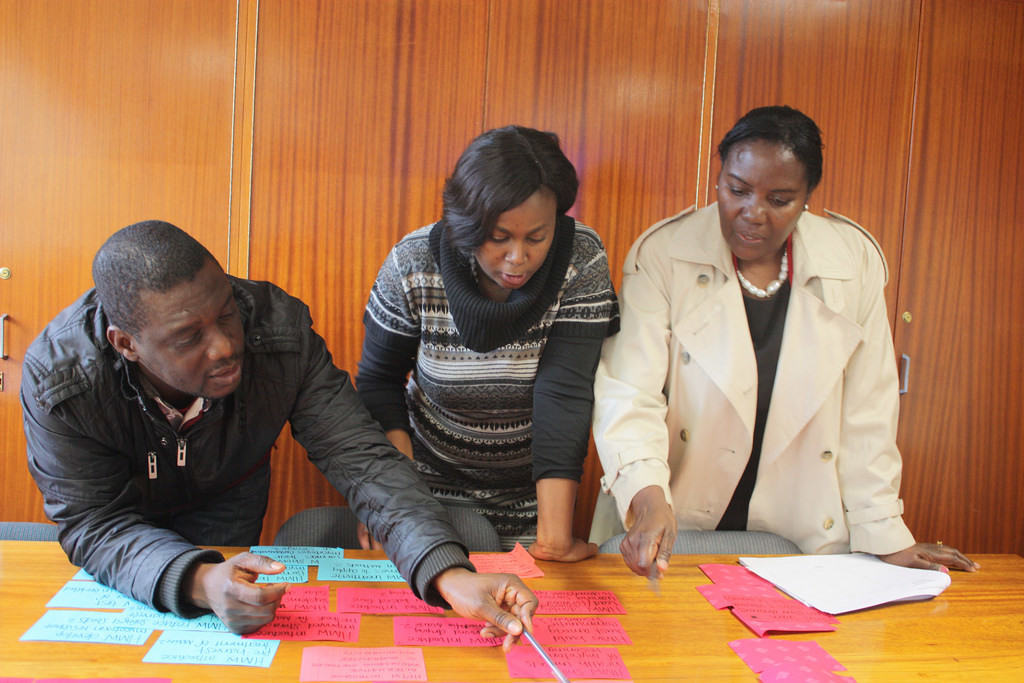How might we better use systems research and analysis to optimize grantmaking?
Facilitating a Grantee Network to Refine Strategy
Challenge
The Bill & Melinda Gates Foundation (BMGF) Livestock team and their livestock grantees wield an enormous influence over the global livestock system. However, as global livestock challenges grow in complexity – ranging from animal disease to climate change – no one grantmaker can easily recognize all of the levers needed to optimize the global livestock system, let alone know how best to push them. Rather, the collaborative efforts of many stakeholders across a multitude of disciplines is required to form and implement effective solutions. Until now, the Foundation lacked an effective method to spur collaboration across their livestock portfolio. In fact, many grantees were not aware of their fellow grantees’ interventions nor did they have a platform that allowed them to share individual ideas, resources, and solutions to ongoing challenges. Further, a shared understanding of the contours – the actors, interactions, leverage points – of the global livestock system had not been cultivated by the Foundation and its partners. The result: missed opportunities to align grantmaking and network formation to the greatest enablers and barriers within the global livestock system.
Solution
The Foundation invited GKI to design a bespoke experience aimed at unifying its global roster of livestock grantees at a three-day experience. The facilitation was designed to meet a trio of objectives: to empower grantees to effectively map the global livestock system, explore areas of alignment for grantee networking, and evaluate the Foundation’s current strategic direction. In April 2018, Foundation grantees assembled in Dubai for this first-ever Livestock Grantees Convening designed and facilitated by GKI.
The interactive convening kicked off with a presentation on the BMGF Livestock strategic vision and portfolio. Participants were then divided into small groups to discuss and analyze the strategies’ strengths and omissions, as well as the questions they had pertaining to the currently executed strategy. Following this, various groups brainstormed the top risks the Foundation faces while implementing their current strategy and then identified recommendations they would make to refine BMGF’s ongoing work. The second day was dedicated to analyzing the global livestock system using a systems-focused lens. GKI organized participants into region-specific teams and taught all participants one of GKI’s systems mapping methodologies. Each team then visualized their respective livestock systems maps based on their knowledge pertaining to the region. Building from this systems-mapping exercise, participants created a value chain assessment that highlighted particular enablers, barriers, and hacks, or potential solutions, to specific value chain challenges present in each regional livestock system. The final day of the convening focused on networking and connecting grantees to useful resources they can utilize in their respective organizations and companies.
“To the GKI team, I don’t know how you do your job. You exceeded my expectations. [We’ve seen that] all good intentions can have unintended consequences and that’s a good lesson. Day two [of the convening] was incredibly insightful seeing how the system works. We’re going to use that substrate to build our systems strategy. ” –Samuel Thevasagayam, Bill & Melinda Gates Foundation
The convening initiated an ongoing discussion with BMGF and its grantees around the need for collaboration and co-creation among key stakeholders to optimize the impact of grantmaking within the global livestock system. Further, recognizing the powerful insights emerging from the convening’s system mapping segments, the Foundation is initiating a more exhaustive systems scoping exercise to guide its strategy looking forward.
Results / Outcomes
- Facilitated an interactive convening in which over 80 participants were able to analyze the global livestock system, understand how they fit within that system, and evaluate how the BMGF strategy operates within that system
- Determined strengths, omissions, questions, risks and recommendations for BMGF leadership to use in strategy refinement
- Guided participants through 8 iterations of location-based systems maps, depicting actors, resources and interactions within the livestock system
- Identified 17 top enablers and 38 top barriers with 10 potential solutions for value-chain operations
- Elicited offers of 178 resources germane to tackling livestock challenges through an interactive resource matchmaking session
- Formed a new coalition of 7+ organizations that will make the investment case for commercial goat-keeping




